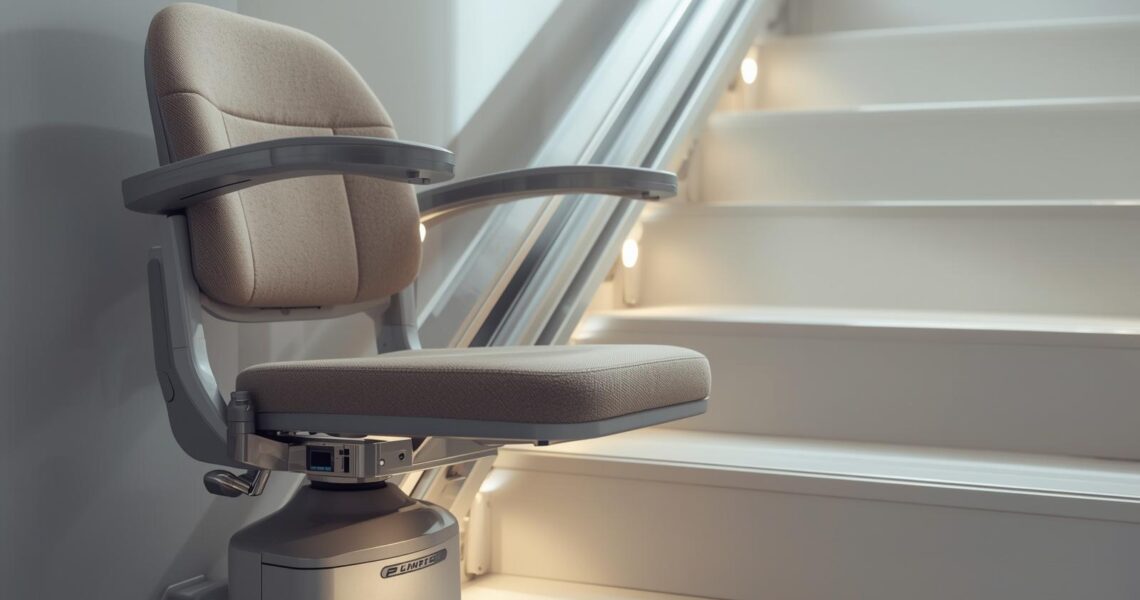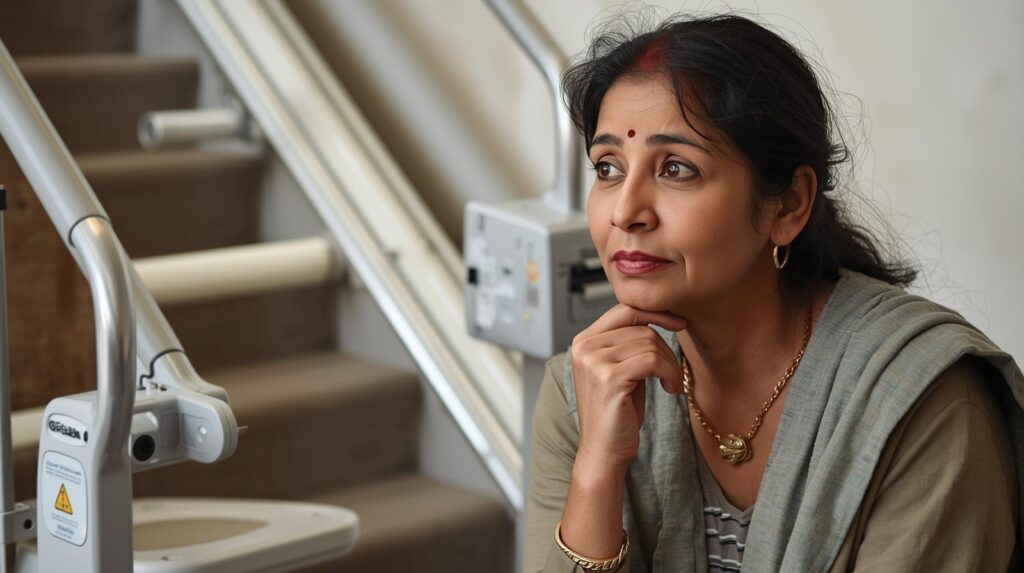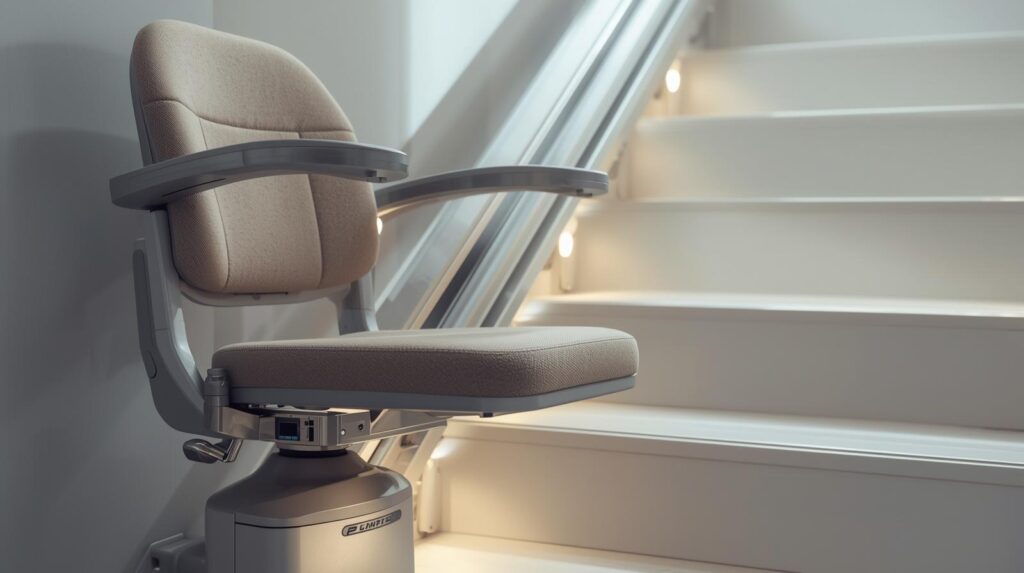
Understanding the Difference Between Stair Elevators and Stair Lifts
November 20, 2025When stairs begin to present a challenge rather than convenience, it is time to explore solutions that can restore safe and independent movement throughout your home. Two popular options emerge in this scenario: stair climbing elevator and a vertical lift for stairs. Despite the similar terminology, these devices differ greatly in function, purpose, and design.
This post explores the key distinctions between a home elevator and stair lift, helping you understand which may better suit your home, health, and future.

What Is a Stair Elevator and How Does It Work?
A stair lift is a motor-powered seat that travels along a rail attached to your staircase. It is designed for individuals who can still sit independently and need help only getting up and down stairs. The chair is operated with simple controls and often includes safety features like seat belts, swivel seats, and footrests.
Stair lifts are especially useful for:
- Individuals with moderate mobility who do not use a wheelchair
- Quick installations with minimal home disruption
- Homes with limited renovation budgets
As noted by Harmar, stair lifts are practical and cost-effective solutions for those who want to stay in their home but face difficulty using the stairs (harmar.com). Most models work on straight staircases, though curved designs are also available with custom rail fittings.
What Is a Stair Elevator?
A residential elevator is a vertical lift system that travels between floors in a straight line. These elevators usually move within an enclosed shaft or open platform area and are operated via touch controls or remotes. Unlike stair lifts, the elevators can carry users in wheelchairs or with walkers, along with items like groceries or laundry baskets.
According to Consumer Affairs, home elevators offer a higher level of accessibility due to allowing wheelchair users to stay in their mobility device throughout the trip between floors.
Key advantages of stair elevators include:
- Full wheelchair accessibility
- Increased property value over time
- Customizable designs that blend with home interiors
- Quiet and smooth vertical travel between levels
Fixr highlights that while stair elevators require more installation time and space than stair lifts, they are available in a range of designs and increase home resale value.
Installation Considerations
The installation process for each option varies significantly. Stair lifts are mounted directly to your staircase and usually require only a few hours to install. This makes them an appealing solution for individuals recovering from injury or needing immediate assistance.
In contrast, the installation procedure involves a more complex process. You may need to modify flooring, frame an elevator shaft, or create additional electrical access points. According to This vs. That, installation of an elevator can take several weeks to complete, depending on the size and complexity of the project.
Comparing Functionality and Use
Choosing the right solution depends on how the mobility aid will be used. If the user is able to transfer into a seated position and does not require support for devices like a wheelchair, then a stair lift will likely suffice. On the other hand, if the user depends on assistive equipment or is planning for future declines in mobility, the home elevator becomes a more comprehensive option.
Here is a practical breakdown:
- Stair lifts are best for short-term recovery, minimal use, or moderate difficulty with stairs.
- Home elevators accommodate multiple floors, users with equipment, and long-term accessibility goals.
Budget and Long-Term Value
The financial aspect plays a big role in this decision. Stair lifts tend to be the more economical option up front. However, home elevators may present a better return on investment in the long run, especially in terms of usability, resale value, and durability.
Residential elevators not only enhance lifestyle quality but also contribute to increasing a home’s market value when thoughtfully integrated. Their appeal to future buyers, especially in aging populations, can make the higher initial cost worthwhile.
Aesthetic and Lifestyle Fit
If the design of your living space matters, stair elevators offer more options. They can be concealed within walls, enclosed in glass for modern flair, or even hidden inside closets. Stair lifts, while much smaller and less intrusive, remain visible on the staircase and might disrupt architectural flow.

Deciding Which One Is Right for You
Making the right choice requires evaluating your mobility challenges, budget, and home layout. A stair lift may be the ideal solution if:
- You can sit and stand independently
- Your needs are expected to be temporary
- You prefer a fast, less costly installation
A stair elevator may be the better option if:
- You use a wheelchair or walker daily
- You are planning for long-term aging in place
- You want to increase your home’s functionality and value
Final Thoughts
The decision between a stair lift and a stair elevator goes beyond technical features. It is about independence, comfort, and the ability to enjoy every part of your home with ease. Both devices offer life-changing benefits, but choosing the right one can make all the difference in your daily experience and future peace of mind.
Take the time to assess your needs or those of your loved one with care. Speak to a trusted mobility specialist and review your home’s structural possibilities. Whether it is a chair that glides along the stairs or a vertical lift that transforms your entire living environment, the right solution will help you move freely and live fully.
If you are ready to take control of your mobility needs, now is the perfect time to explore the best stair elevator or lift solution for your home.